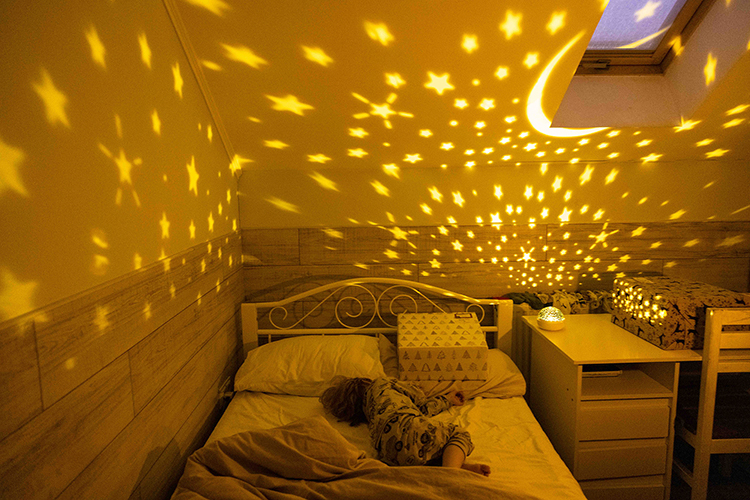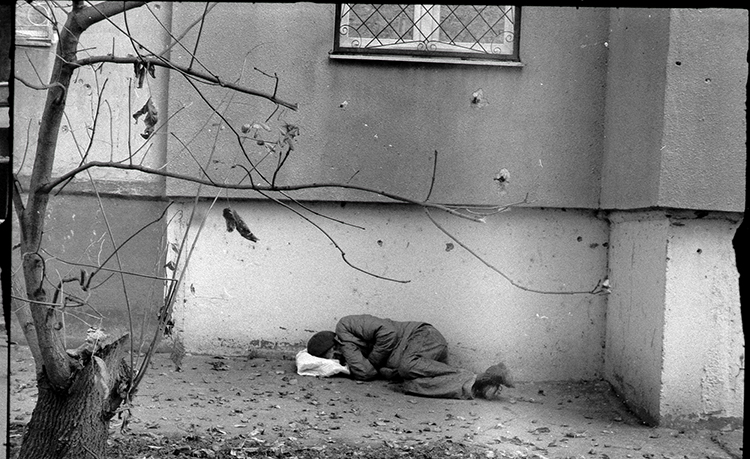Ukrainian photographer Oleksandr Klymenko has been documenting events that others don't even dare to see for over thirty years. He spoke about intuition and chance, which lead a photographer to the decisive shot, about colour photographs of combat operations that immerse the viewer in the pain and bitterness of war, and about how to stay in the profession and stay alive in every sense of the word.
Half a century with a camera
“I first picked up a camera when I was 14 years old. You could say that I've been suffering from this disease — photography — for 51 years,” says Oleksandr Klymenko with a smile. He is one of those photographers whose work has captured the history of Ukraine since its independence. Oleksandr Klymenko was on Hrushevsky Street on January 19, 2014, photographed the front lines in Donbas from the first months of the war, and also documented conflicts in Africa and the Balkans. “I graduated from the journalism department in 1986. I was immediately hired by the newspaper Silski Visti, where I worked for four years. On the first day of 1991, I joined the newspaper Holos Ukrainy. The publication existed for thirty-three years and three months. Now I work at Ukrinform. This disease, photography, won't let me go,“ says Oleksandr Klymenko.
”I served in the army and entered university. I believe that my university education gave me a lot for my future profession. We studied history, literature, the history of journalism, and so on,” says Oleksandr Klymenko. ”When democratic processes began in Ukraine in 1988-1989, I felt that this was history, and I wanted to photograph it. Thanks to university, I understood the importance of the events of that time. The conclusion is this: study, my brothers. Science is very good.” Oleksandr Klymenko emphasizes that in 1991, at the time of independence, everything around him was in turmoil. The photographer witnessed the blue and yellow flag being raised over the Verkhovna Rada of Ukraine for the first time on September 4, 1991. “My friend and I went out for a beer, and I took my radio with me everywhere. When I heard that the flag would be raised over the Rada, I immediately ran there,” says the photographer.

Oleksandr Klymenko recalls another story when he failed to capture important events. On the night when the Constitution of Ukraine was adopted, the photographer returned from a business trip. He needed to submit his material urgently, so he spent the night in the lab, developing and printing photos. “I could have gone to the Rada at night to take photos. I only got there at eight in the morning, although I could have been there much earlier. Of course, I took a few shots, but I missed the important events and emotional passions,” says Klymenko.



“In the early years of independence, I took a lot of photos. My photos from that period can be compared to folk songs, where everyone knows the words and music, but no one remembers the author,” smiles Oleksandr Klymenko. ”However, when large media outlets with a good reputation publish photos without permission and without attribution, it is wrong and very offensive.”
The color of blood
“Photography is an important tool of history. You have to watch videos and make an effort, but photos convey information immediately — they are super communicators,” says Oleksandr Klymenko. “Especially now, when there is war in our country, photography plays a very important role.”
Oleksandr Klymenko started shooting on black-and-white film, but now he shoots with digital equipment and in color. “Our work requires that you have good equipment and understand its settings well. It is worth spending money on equipment and buying lenses and cameras that are convenient for you. However, the main thing is not the lens, but who is behind it,“ says the photographer.
”In my opinion, color photography provides much more information than black-and-white photography. For example, you can clearly see the color of blood. The impression of a photo will be completely different if the blood is red and the explosions are orange,” says Oleksandr Klymenko. ”With modern technology, you can easily convert a color image to monochrome, use special presets in programs, and add graininess to photos, which is characteristic of different types of film. However, I find this dishonest. If you want to take black-and-white film photos, you should do so right away.” Oleksandr Klymenko explains that you can take beautiful shots or work in the technique used by war photographers during World War I, but journalists need facts first and foremost.
.jpg)
“Success in our profession largely depends on chance. You may find yourself in a place where important events are taking place, and you may be the only photographer who captured them. Of course, your photos will be the best then,” smiles Oleksandr Klymenko. ”It's worth taking a lot of photos. The main thing is to be where important events are happening, to witness historical moments and photograph them."
Not for publication
Oleksandr Klymenko has been documenting the war in Ukraine since 2014. “I think the Russian-Ukrainian war is special for all Ukrainians. It hurts me a lot,” says Oleksandr Klymenko. ”I photographed the war in Sarajevo, and a couple of hours later I could be in Kyiv and distract myself from everything I had seen. Now we can't do that — we are constantly at war. No matter what we think about, no matter what we do, the war is present in everything, the war is in our subconscious.” Despite being concussed and wounded on the Maidan, the photographer continues to work in the hottest spots.
Oleksandr Klymenko emphasizes that it is necessary to photograph and show the world all the horrors of the war in Ukraine. “I believe that everything should be photographed, always. Another question is whether everything should be immediately shown in the media or on social networks. When Kyiv Oblast was liberated, I saw terrible scenes there: in the village of Dmytrivka, I photographed a severed head, and on the Zhytomyr highway, I saw burned bodies and cats eating human flesh. I haven't published these photos anywhere, but they exist,” says Oleksandr Klymenko. He participated in a training session for journalists, where a situation was simulated: bloodied people were lying in a room after an explosion. Oleksandr Klymenko and his colleagues immediately rushed to help. Instead, the trainer said that photojournalists should not only save lives, but also take pictures. Photographers are at the scene primarily to document it.
Ukrainian photographers are now seeing a lot of deaths, and virtually all photographers in Ukraine have become war photographers. “How can you see the pain and feel the bitterness of war if photographers are restricted in their subjects? Various media outlets often request photos that will not traumatize their readers too much. Organizers of exhibitions abroad say they don't want “scary images that may contain sensitive information.” People don't want to see the pain of others,” says Oleksandr Klymenko.
“If you are a Ukrainian photographer, you need to show Ukraine, its history, and its present. Many of my colleagues work with foreign media and agencies, and the world sees the war in Ukraine through their eyes. It is important to work and try to do everything as best as possible.”
— Oleksandr Klymenko.
Oleksandr Klymenko has accumulated many different stories during his career. He recalls when, in 2014, he was filming the fighting in eastern Ukraine and came under heavy fire. “I was lying there thinking about what to do. Nowadays, many people have had similar experiences, even in their own homes in Kyiv. We are living in a war,” says the photographer. When asked about professional burnout, his answer is simple: if you enjoy your work, you won't burn out. However, he adds that it is important to find balance in everything.
Contributors:
Researcher, author: Katya Moskalyuk
Image editor: Olga Kovaleva
Literary editor: Yulia Futey
Website manager: Vladislav Kukhar

.png)


%20(750%20x%20360%20%D0%BF%D1%96%D0%BA%D1%81.)%20(3).png)

















